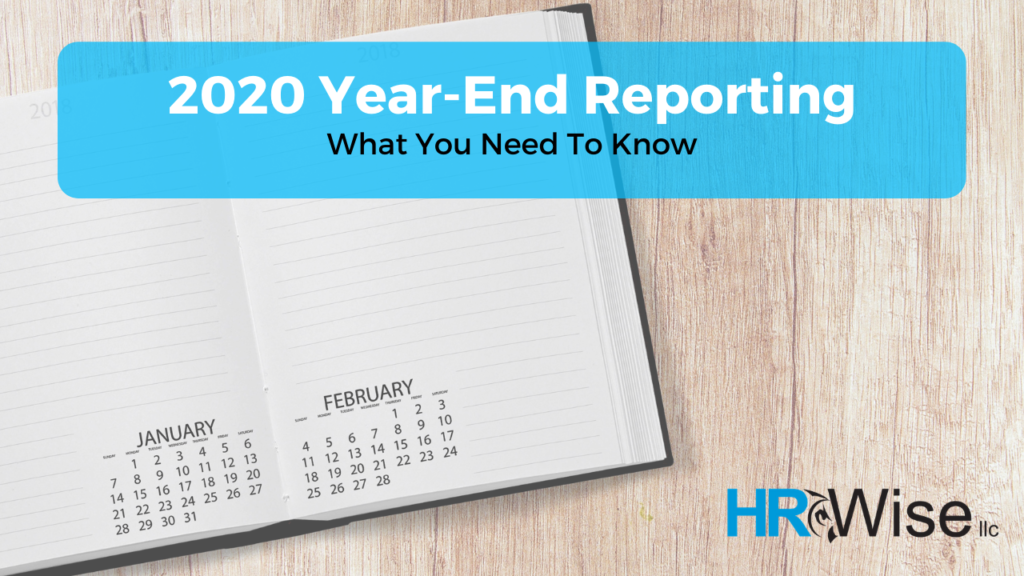2020 was a year full of uncertainty but one thing is for certain and that is that a little guidance is necessary. Year-end reporting for tax and payroll will look substantially different this year due to the continued changes in legislation in response to the COVID-19 Pandemic. This blog is going to give you a sneak peak of what to expect in the coming weeks.
Federal Legislation, Social Security Tax Deferments and Year-End Reporting

Memorandum on Deferring Payroll Tax was signed into law to permit deferral of employee Social Security taxes on wages paid from September 1 through the end of 2020. Although several elements are pending on IRS guidance it is likely that businesses will need to take this into account for reporting. This will include details regarding deferrals such as wages paid during the deferral period, and perhaps amounts deferred, on Forms W-2 and 941.
- The Families First Coronavirus Response Act (FFCRA) was signed into law to require employers with less than 500 employees to pay Qualified Sick and Family Leave to employees who were ill or quarantined, or who needed to care for others. Employers must separately report Qualified Sick and Family Leave Wages paid under the FFCRA on 2020 Forms W-2.
- The IRS has notified EMPLOYERS that they must separately report Qualified Sick and Family Leave Wages paid under the FFCRA on 2020 Forms W-2.
The leave must be separately reported by employers (if it is applicable) in Box 14, or on a separate statement:
- Sick leave wages subject to the $511 per day limit because of care you required
- Sick leave wages subject to the $200 per day limit because of care you provided to another
- Emergency family leave wages
State Reporting and Withholding Changes
At the state level employers must be aware of their state’s conformity with the Coronavirus Aid, Relief, and Economic Security (CARES Act) which was signed into Law on March 27, 2020. For the majority most states will adopt the Internal Revenue Code (IRC). But even those that do will sometimes make exceptions based on certain circumstances. One example in the CARES Act is the tax exclusion for employer student loan repayment benefits. Employers can contribute up to $5,250 in 2020 toward an employee’s student loans, and these payments would be excluded from the employee’s income for federal purposes. But unless the state automatically or otherwise adopted that provision, any such payments must be reported on the state W-2 as taxable income.
This is one of many of the changes to employee benefits and payroll reporting compliance requirements that were implemented in 2020.
Withholding Requirements for Employees Working in Other States
State income tax withholding for employees traveling across borders became significantly difficult because of COVID-19. With the majority of states mandating state-wide stay-at-home orders many employees were forced to work from home for an extended period of time. For employees who would typically cross state lines, this possibly created new legal and tax obligations for both employers and employees.
The presence of an employee in a state in which an employer does not have a legal and tax presence (known as “nexus”) may also subject the employer to new obligations in any states in where their employees are working from home. This may include state business income tax and sales tax obligations. Some state announcements have addressed this question. For example, the state may not seek to establish nexus for any business tax, including sales and withholding tax, solely because an employee is temporarily working from home due to COVID-19. Employers facing these and related questions should consult with appropriate legal and tax professionals.
New IRS Form W-4
The W-4 Form was dramatically revised for the year 2020, the new design reduced the form’s complexity and increased the transparency and accuracy of the withholding system. One issue that arose with this new form is that employees are required to input information from the prior tax year. Obviously most new hires will not have this information on hand, so adjusting your on-boarding process to either include that this information is necessary (to better prepare them) or allowing them a couple days to complete the form will assist in making it a smoother experience.
The new W-4 Form remains optional; however as their employer you must have a valid 2019 or prior W-4 form for that employee you may stick with that. Honoring that form is required meaning that you may end up with a two parallel payroll withholding systems in the foreseeable future. Below you will find the PDF Form of the 2020 W-4. The IRS has also compiled a Frequently Asked Questions page in regards to this new form, for further information click the link.

